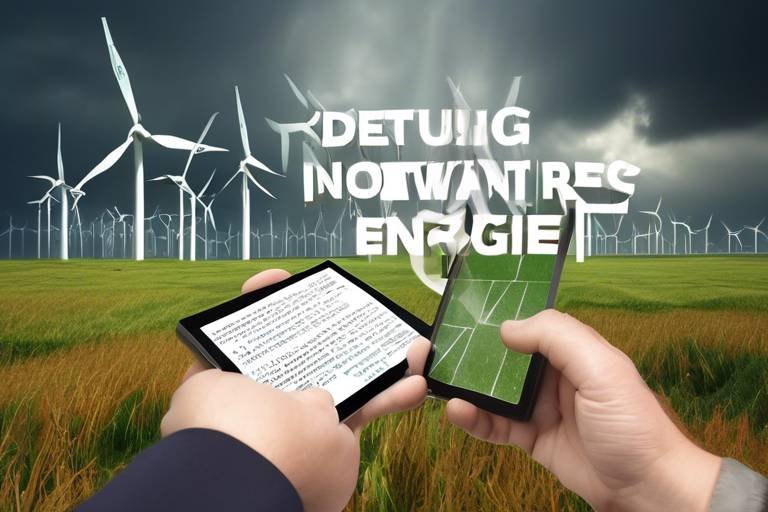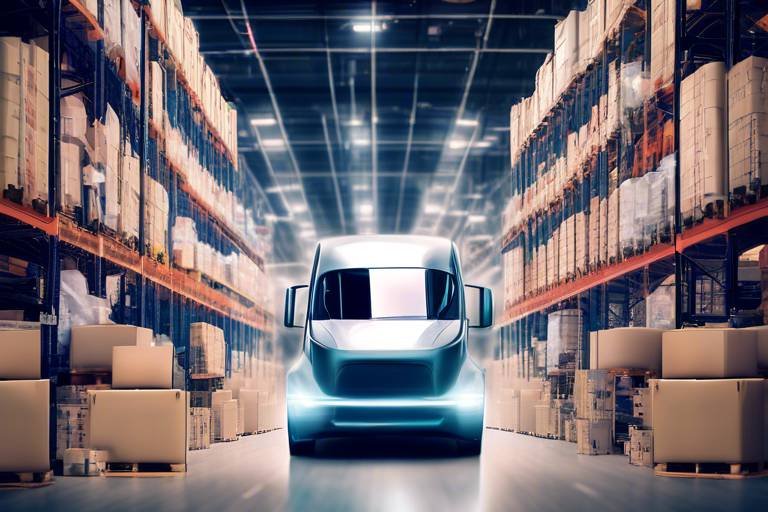Predicting the Future of Renewable Energy Technologies
As we stand on the brink of a new energy era, the future of renewable energy technologies is not just a topic of discussion; it’s a vibrant tapestry of innovation, potential, and necessity. With climate change knocking at our door, the urgency to transition from fossil fuels to cleaner alternatives has never been more pronounced. This article explores the anticipated advancements in renewable energy technologies, examining trends, innovations, and challenges that will shape the energy landscape in the coming years.
Imagine a world where our energy is not only abundant but also sustainable. The advancements in renewable energy technologies are paving the way for such a future. From solar panels that can generate power even on cloudy days to wind turbines that harness the power of the gentlest breeze, the innovations are as diverse as they are exciting. As we dive deeper into the world of renewable energy, we’ll uncover how these technologies are evolving and what they mean for our planet.
The landscape of renewable energy is constantly changing, driven by technological advancements and growing environmental awareness. In the coming years, we can expect to see an increase in the adoption of emerging renewable energy sources such as tidal, geothermal, and advanced biofuels. These sources are gaining traction due to their potential to provide reliable and sustainable energy solutions. Tidal energy, for instance, harnesses the power of ocean tides, while geothermal energy utilizes the earth's internal heat. Both are promising alternatives that could significantly impact the energy market.
As we explore these advancements, it’s crucial to consider the role of energy storage solutions. With the intermittent nature of renewable sources like solar and wind, effective storage technologies are essential for maintaining a stable energy supply. Innovations in battery technology, such as solid-state batteries and lithium-sulfur solutions, are at the forefront of this evolution, promising longer life spans and higher energy densities. Additionally, hydrogen is emerging as a versatile energy carrier, offering new possibilities for large-scale energy storage and integration into our existing systems.
Moreover, the rise of smart grids is transforming how we manage and distribute energy. By utilizing real-time data and automation, smart grids enhance the efficiency and reliability of renewable energy systems. This shift not only optimizes energy consumption but also empowers consumers to take control of their energy use, leading to a more sustainable future.
Government policies and incentives play a pivotal role in shaping the growth of renewable energy technologies. As countries around the globe implement supportive regulations and financial incentives, the transition to cleaner energy sources accelerates. A closer look at global trends reveals that various nations are adopting renewable energy at differing rates, influenced by economic, environmental, and social factors. Understanding these dynamics is crucial for predicting how renewable technologies will evolve in the years to come.
However, the journey towards a renewable energy future is not without its challenges. Key obstacles such as financing, infrastructure development, and public acceptance must be addressed for successful implementation. As we navigate these hurdles, it’s essential to foster a collaborative environment where governments, businesses, and communities work together towards a common goal: a sustainable planet powered by renewable energy.
- What are the main types of renewable energy? The main types include solar, wind, hydroelectric, geothermal, and biomass energy.
- How does renewable energy benefit the environment? Renewable energy reduces greenhouse gas emissions, decreases air pollution, and conserves natural resources.
- What challenges does renewable energy face? Key challenges include financing, infrastructure needs, and public perception.
- How can I support renewable energy initiatives? You can support renewable energy by using energy-efficient appliances, advocating for policies that promote clean energy, and considering renewable energy options for your home.

Emerging Renewable Energy Sources
As we venture further into the 21st century, the quest for sustainable and clean energy sources is more crucial than ever. While traditional renewable energy sources like solar and wind have made significant strides, new players are entering the arena, promising to diversify our energy portfolio and enhance energy security. Among these emerging sources, tidal energy, geothermal energy, and advanced biofuels are gaining traction, each with unique benefits and challenges.
Tidal energy harnesses the power of ocean tides and currents. Imagine the rhythmic ebb and flow of the sea; it’s like nature’s own clockwork that can be tapped into for energy. Tidal turbines, similar to underwater windmills, can convert kinetic energy from moving water into electricity. This energy source is particularly appealing because it is highly predictable, unlike solar or wind, which can be intermittent. However, the technology is still in its infancy, facing challenges such as high installation costs and potential environmental impacts on marine ecosystems.
On the other hand, geothermal energy taps into the Earth’s internal heat. This energy source is akin to opening a natural oven; beneath our feet lies a reservoir of thermal energy that can be harnessed for heating and electricity generation. Geothermal plants can operate continuously, providing a consistent energy supply. Nevertheless, the geographical limitations of geothermal resources pose significant challenges, as not all regions have access to these hot spots. Furthermore, the initial investment for geothermal plants can be substantial, although operational costs are relatively low.
Then we have advanced biofuels, which are derived from organic materials. Unlike traditional biofuels that often compete with food crops, advanced biofuels can be produced from non-food sources, such as agricultural waste or algae. This innovation not only reduces competition for arable land but also presents a sustainable way to utilize waste products. The potential for biofuels to reduce greenhouse gas emissions is significant, but the technology is still evolving, and scalability remains a concern.
To summarize, the future of renewable energy is bright with these emerging sources. They offer a variety of options that could complement the existing energy landscape. However, as with any innovation, it’s essential to navigate the challenges they present. Investments in research and development, along with supportive policies, will be crucial in unlocking their full potential.
In conclusion, as we explore these emerging renewable energy sources, we must remain mindful of their environmental impacts and economic viability. The integration of these technologies into our existing infrastructure will not only enhance energy security but also pave the way for a more sustainable future.
- What are the main benefits of tidal energy? Tidal energy is highly predictable and can provide a consistent energy supply, unlike some other renewable sources.
- Is geothermal energy available everywhere? No, geothermal energy is location-dependent and is most effective in regions with volcanic activity or hot springs.
- How do advanced biofuels differ from traditional biofuels? Advanced biofuels are produced from non-food sources, reducing competition with food crops and utilizing waste materials.
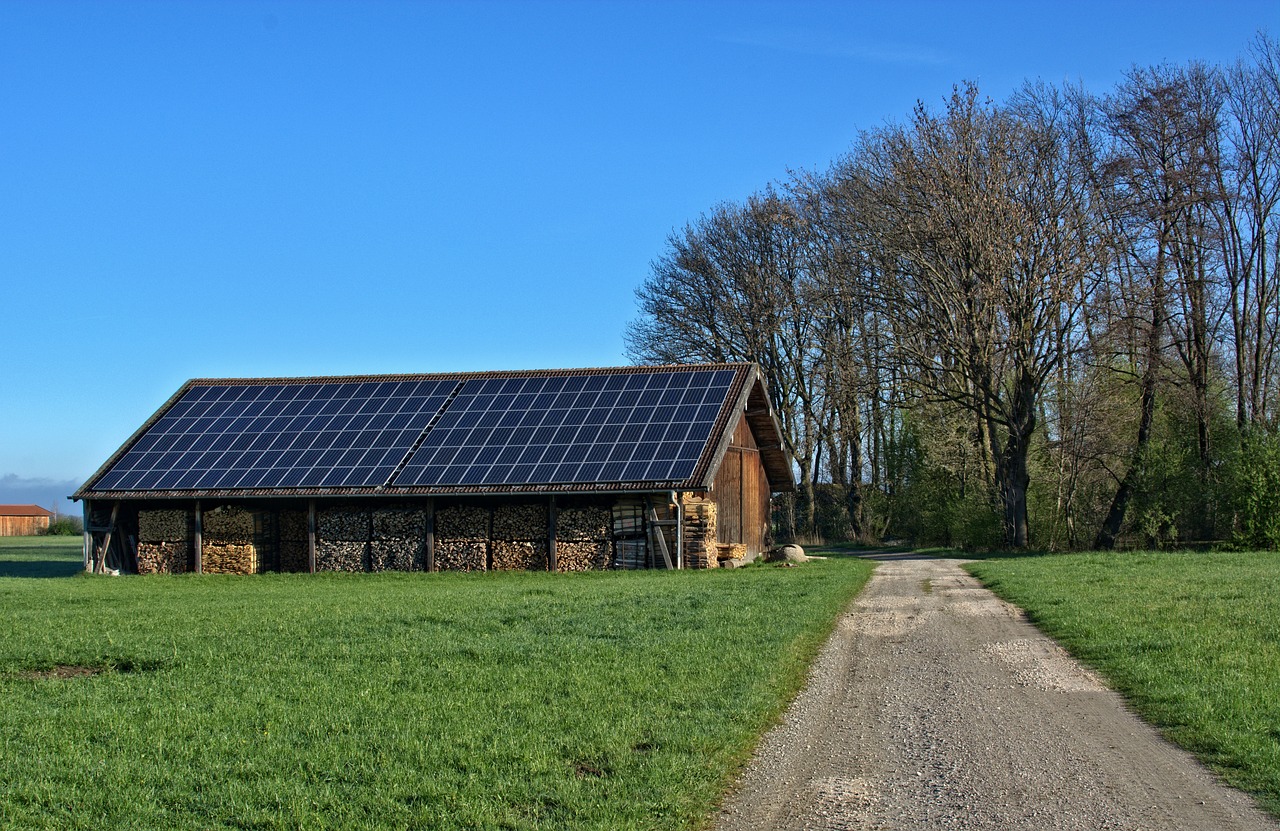
Technological Innovations in Solar Energy
In recent years, the solar energy sector has witnessed an explosion of technological innovations that are not only enhancing efficiency but also making solar power more accessible to a broader audience. Imagine a world where solar panels are not just flat, rectangular slabs on rooftops but dynamic, intelligent systems that adapt to their environment. This is becoming a reality with the development of bifacial solar panels and solar tracking systems.
Bifacial panels, for instance, are designed to capture sunlight from both sides, significantly increasing their energy output. Traditional solar panels only harness sunlight from one side, but bifacial technology allows for the absorption of reflected sunlight from the ground, which can boost energy generation by up to 30% in optimal conditions. This dual-sided approach is akin to having a two-for-one deal on your energy production, making it a game changer in the solar industry.
Furthermore, solar tracking systems are another leap forward. These systems adjust the angle of solar panels throughout the day to follow the sun’s path across the sky. By optimizing the angle of incidence, these trackers can increase energy capture by as much as 25% to 35% compared to fixed installations. It’s like having a personal assistant for your solar panels, ensuring they’re always positioned for maximum sunlight exposure.
But the innovations don’t stop there. The integration of smart technologies into solar energy systems is paving the way for enhanced performance and management. For instance, the use of IoT (Internet of Things) devices allows for real-time monitoring and analysis of solar energy output. This means homeowners and businesses can track their energy production and consumption, making it easier to optimize usage and reduce waste. It’s like having a fitness tracker for your solar energy system!
Moreover, the advent of perovskite solar cells is another exciting innovation. These cells promise a lower production cost and higher efficiency than traditional silicon-based solar cells. With the potential for 20% to 30% efficiency rates, perovskite cells could revolutionize the solar market. Imagine solar panels that are lighter, cheaper, and more efficient—this technology might just be the key to widespread adoption.
As we delve deeper into the realm of solar energy, it becomes clear that these innovations are not merely incremental improvements; they represent a fundamental shift in how we harness the sun’s power. However, with great potential comes great responsibility. The challenge lies in ensuring that these technologies are developed sustainably and can be integrated seamlessly into existing energy infrastructures.
To summarize, the future of solar energy is bright, filled with groundbreaking technologies that promise to enhance efficiency, reduce costs, and increase accessibility. As we continue to innovate, the dream of a world powered by clean, renewable energy becomes ever more attainable. The question remains: are we ready to embrace these changes and lead the charge towards a sustainable future?
- What are bifacial solar panels?
Bifacial solar panels are designed to capture sunlight from both sides, enhancing their energy output compared to traditional panels.
- How do solar tracking systems work?
These systems adjust the angle of solar panels throughout the day to follow the sun, maximizing sunlight exposure and energy capture.
- What are perovskite solar cells?
Perovskite solar cells are a new type of solar technology that promises lower production costs and higher efficiency compared to traditional silicon cells.
- How can I monitor my solar energy production?
Through the use of IoT devices, homeowners can track their solar energy production and consumption in real-time.

Energy Storage Solutions
Energy storage solutions are the unsung heroes of the renewable energy revolution. Imagine trying to fill a bucket with water while it's raining — you want to catch every drop, but without a proper container, you’ll just end up with a mess. Similarly, renewable energy sources like solar and wind generate power intermittently, and without effective storage systems, we risk wasting valuable energy. As we look to the future, advancements in energy storage technologies will play a critical role in maximizing the potential of these renewable sources.
One of the most exciting developments in this field is the evolution of batteries. Traditional lithium-ion batteries have served us well, but they come with limitations, such as relatively short life spans and safety concerns. This is where innovations like solid-state batteries come into play. By using a solid electrolyte instead of a liquid one, these batteries promise to deliver enhanced safety, longer life, and higher energy densities. Imagine a smartphone that lasts for days on a single charge — that’s the kind of future we’re talking about!
Another intriguing aspect of energy storage is the role of hydrogen as an energy carrier. Hydrogen can be produced using renewable energy through processes like electrolysis, where water is split into hydrogen and oxygen. This hydrogen can then be stored and used later, either in fuel cells to generate electricity or as a direct fuel source. Think of it as a renewable energy suitcase that you can pack and unpack whenever you need it. The versatility of hydrogen makes it a promising candidate for large-scale energy storage, especially for balancing supply and demand across the grid.
To illustrate the diverse array of energy storage technologies, consider the following table that highlights some of the most promising solutions:
| Storage Technology | Key Features | Potential Applications |
|---|---|---|
| Solid-State Batteries | Higher energy density, improved safety | Electric vehicles, consumer electronics |
| Hydrogen Storage | Versatile energy carrier, long-term storage | Grid balancing, transportation |
| Pumped Hydro Storage | Established technology, large capacity | Grid-scale energy storage |
| Flywheel Energy Storage | Rapid response, high power output | Frequency regulation, short-term storage |
As we transition to a cleaner energy future, the importance of energy storage cannot be overstated. Innovations in this area will not only enhance the efficiency of renewable energy systems but also provide the necessary flexibility to accommodate the growing demand for clean energy. The journey toward a sustainable energy landscape is like climbing a mountain; energy storage solutions are the sturdy ropes that will help us reach the summit safely and effectively.
- What are energy storage solutions? Energy storage solutions are technologies that store energy for later use, enabling a more reliable and efficient energy supply.
- Why is energy storage important for renewable energy? Energy storage helps balance supply and demand, ensuring that energy generated from renewable sources can be used even when production is low.
- What are the most common types of energy storage technologies? Common types include batteries (like lithium-ion and solid-state), pumped hydro storage, and hydrogen storage.
- How does hydrogen storage work? Hydrogen can be produced using renewable energy, stored, and later converted back into electricity or used as a fuel.

Advancements in Battery Technology
When we think about the future of renewable energy, one of the most exciting areas to watch is battery technology. The energy landscape is evolving rapidly, and advancements in battery systems are at the forefront of this transformation. Imagine a world where your electric vehicle can travel longer distances on a single charge, or where your home can store enough energy to power itself through the night. This is not just wishful thinking; it's becoming a reality thanks to groundbreaking innovations in battery technology.
One of the most promising developments is the rise of solid-state batteries. Unlike traditional lithium-ion batteries, which use liquid electrolytes, solid-state batteries employ solid electrolytes. This shift not only enhances safety—reducing the risk of leaks and fires—but also significantly increases energy density. In simpler terms, this means that these batteries can store more energy in a smaller space, making them ideal for everything from smartphones to electric cars. In fact, some researchers predict that solid-state batteries could offer up to three times the energy density of current lithium-ion batteries, revolutionizing how we think about energy storage.
Another exciting advancement is in the realm of lithium-sulfur batteries. These batteries have the potential to be cheaper and lighter than their lithium-ion counterparts while offering a higher energy capacity. The chemistry behind lithium-sulfur batteries allows them to hold more energy per weight unit, which is a game changer for applications where weight is a critical factor, such as in aviation and electric vehicles. However, challenges remain in terms of cycle life and stability, but researchers are making strides in overcoming these hurdles, making this technology one to watch.
Moreover, we can't ignore the evolution of recycling technologies for batteries. As the demand for batteries increases, so does the need to manage end-of-life products. Innovative recycling methods are being developed to recover valuable materials from used batteries, which not only helps in reducing waste but also secures a supply chain for essential components like lithium, cobalt, and nickel. This circular economy approach is vital for sustainability in the renewable energy sector.
To put things into perspective, consider the following table that highlights some key differences between traditional lithium-ion batteries and emerging technologies like solid-state and lithium-sulfur batteries:
| Battery Type | Energy Density (Wh/kg) | Safety | Cycle Life |
|---|---|---|---|
| Lithium-Ion | 150-250 | Moderate | 500-1500 cycles |
| Solid-State | 300-500 | High | 2000+ cycles |
| Lithium-Sulfur | 500-600 | Moderate | 300-500 cycles |
As we continue to push the boundaries of what's possible, the advancements in battery technology are not just technical feats; they represent a shift towards a more sustainable and efficient energy paradigm. With ongoing research and development, we can expect to see these technologies become more mainstream, paving the way for a future where renewable energy is not just an alternative but the primary source of power. So, buckle up, because the journey into the future of energy storage is just getting started!
- What are solid-state batteries?
Solid-state batteries use solid electrolytes instead of liquid ones, offering higher energy density and improved safety. - How do lithium-sulfur batteries differ from traditional batteries?
Lithium-sulfur batteries are lighter and cheaper, with a higher energy capacity but face challenges in cycle life. - Why is battery recycling important?
Battery recycling helps recover valuable materials, reduces waste, and supports sustainable energy practices.

Hydrogen as an Energy Storage Medium
Hydrogen is rapidly gaining recognition as a versatile energy storage medium, and its potential is nothing short of revolutionary. Imagine a world where excess energy generated from renewable sources, such as solar and wind, can be stored and used on demand. That’s precisely what hydrogen offers! By converting surplus electricity into hydrogen through a process called electrolysis, we can create a clean fuel that can be stored and transported easily. This not only helps in balancing energy supply and demand but also plays a crucial role in reducing greenhouse gas emissions.
One of the most exciting aspects of hydrogen is its ability to serve multiple purposes. It can be used directly as a fuel for fuel cells, which produce electricity by combining hydrogen and oxygen, emitting only water vapor as a byproduct. This makes hydrogen a clean alternative to fossil fuels, especially in sectors that are hard to electrify, such as heavy-duty transport and industrial processes. Additionally, hydrogen can be blended with natural gas, allowing existing infrastructure to be utilized while gradually transitioning to cleaner energy sources.
However, the journey to widespread adoption of hydrogen as an energy storage medium is not without its challenges. The production of hydrogen is currently dominated by methods that rely on fossil fuels, which negates some of the environmental benefits. Therefore, advancing green hydrogen production methods, which utilize renewable energy for electrolysis, is essential. This transition is not just about technology; it also involves significant investments and supportive policies to create a favorable environment for hydrogen production and utilization.
To better understand the potential of hydrogen in the energy landscape, let’s take a look at some key advantages and challenges:
| Advantages | Challenges |
|---|---|
|
|
In conclusion, hydrogen stands at the forefront of the energy transition, offering a promising solution for energy storage that complements renewable energy sources. As we continue to innovate and invest in hydrogen technologies, the dream of a sustainable, low-carbon future becomes increasingly attainable. The road ahead may be challenging, but the potential rewards are immense, paving the way for a cleaner, more resilient energy system.
What is hydrogen energy?
Hydrogen energy refers to the use of hydrogen as a fuel for generating energy, typically through fuel cells or combustion, producing only water as a byproduct.
How is hydrogen produced?
Hydrogen can be produced through various methods, including electrolysis of water, steam methane reforming, and biomass gasification. The most sustainable method is electrolysis using renewable energy.
What are the advantages of using hydrogen?
Hydrogen has several advantages, including zero emissions when used in fuel cells, high energy density, and versatility for various applications, from transportation to energy storage.
What are the challenges of hydrogen energy?
Challenges include high production costs, limited infrastructure for storage and transport, and the need for public acceptance and supportive policies.

Smart Grids and Energy Management
In the evolving landscape of renewable energy, smart grids are emerging as a game-changer, revolutionizing how we distribute and manage energy. Imagine a network that not only delivers electricity but also communicates in real-time, adjusting to changes in demand and supply. This is precisely what smart grids do. They integrate advanced technologies, such as IoT sensors, artificial intelligence, and data analytics, to create a more efficient and reliable energy system. With the increasing penetration of renewable sources like solar and wind, the need for a responsive grid has never been more critical.
One of the most remarkable features of smart grids is their ability to enhance energy management through real-time data analysis. By collecting data from various sources, including smart meters and weather forecasts, these grids can predict energy demand patterns and adjust supply accordingly. This not only helps in managing peak loads but also minimizes energy waste. For instance, during a sunny day when solar energy production peaks, smart grids can redirect excess energy to where it's needed most, ensuring that no watt goes to waste.
Moreover, smart grids empower consumers with energy management tools. Homeowners can monitor their energy usage in real-time through apps and dashboards, allowing them to make informed decisions about their consumption. This level of transparency fosters a culture of energy conservation and encourages users to shift their usage to off-peak times, further balancing the grid. Think of it as having a personal energy assistant that helps you save money and reduce your carbon footprint!
However, the transition to smart grids is not without its challenges. The integration of new technologies requires significant investment in infrastructure and ongoing maintenance. Additionally, there are concerns about data privacy and cybersecurity, as the increased connectivity of devices can expose vulnerabilities. Addressing these issues is essential for the successful implementation of smart grid technologies. As we look to the future, the potential benefits of smart grids in enhancing the efficiency, reliability, and sustainability of our energy systems are immense.
In summary, smart grids represent a pivotal shift in energy management, enabling a more responsive and efficient system that benefits both producers and consumers. As we continue to innovate and overcome the challenges associated with these technologies, the future of renewable energy management looks brighter than ever.
- What is a smart grid? A smart grid is an electricity supply network that uses digital technology to monitor and manage the transport of electricity from all generation sources to meet the varying electricity demands of end users.
- How do smart grids benefit consumers? Smart grids provide consumers with real-time data about their energy usage, enabling them to make informed decisions, reduce consumption, and save on energy costs.
- What challenges do smart grids face? Challenges include the need for significant infrastructure investments, concerns over data privacy and cybersecurity, and the integration of various technologies.
- Are smart grids essential for renewable energy? Yes, smart grids are crucial for effectively integrating and managing renewable energy sources, ensuring efficient distribution and reducing waste.
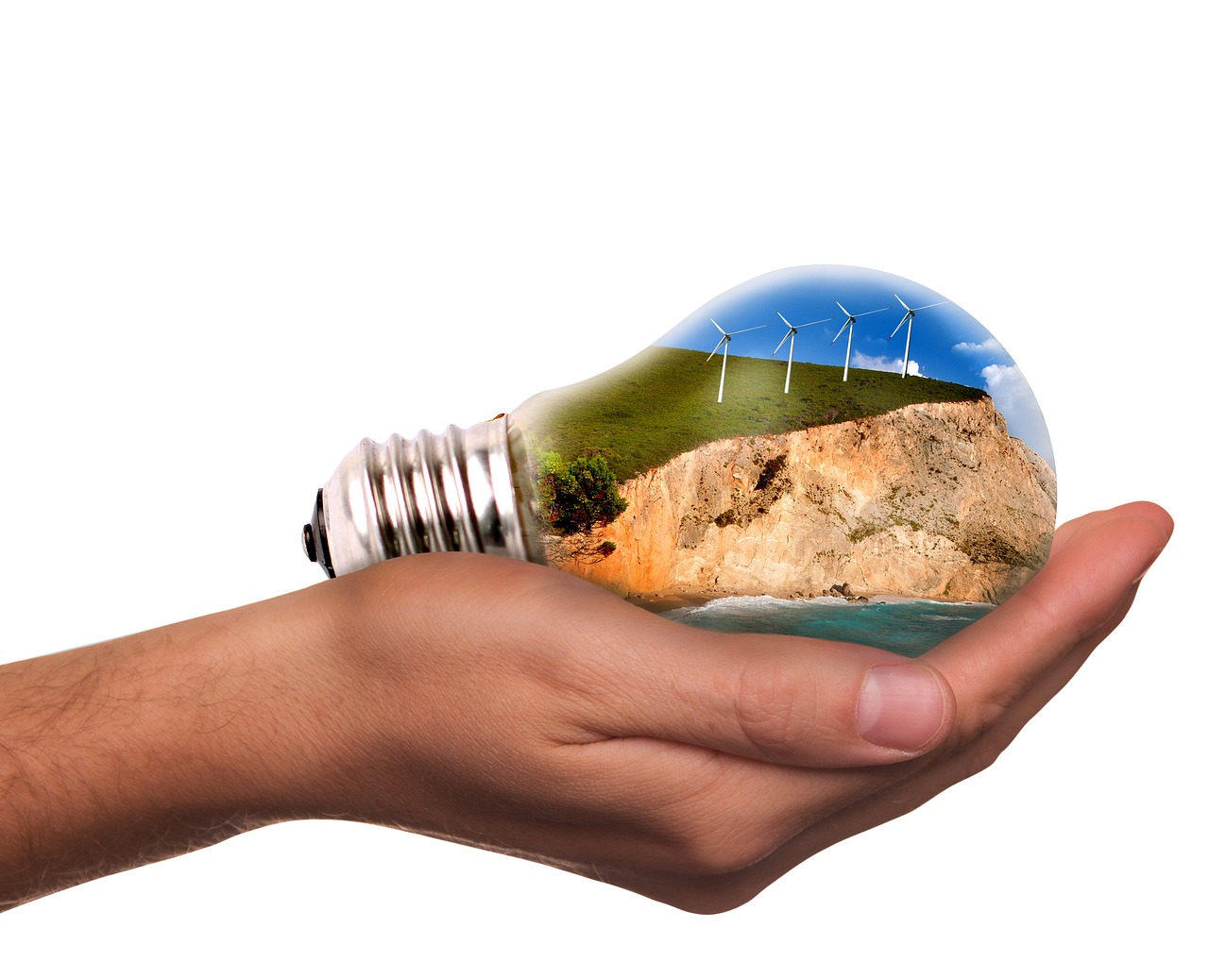
Government Policies and Incentives
The landscape of renewable energy is significantly shaped by government policies and incentives that encourage the adoption of cleaner technologies. As we transition into a more sustainable future, it becomes increasingly important to understand how various governments around the world are facilitating this shift. From tax credits to subsidies, these initiatives not only promote the growth of renewable energy sectors but also help in reducing greenhouse gas emissions, thus combating climate change.
One of the most effective ways governments have incentivized renewable energy adoption is through financial support mechanisms. For instance, many countries offer tax incentives for individuals and businesses that invest in renewable technologies. These incentives can take various forms, such as investment tax credits, which allow investors to deduct a significant percentage of their investment costs from their taxable income. This not only lowers the initial cost barrier but also encourages more people to consider renewable energy solutions.
Moreover, feed-in tariffs and power purchase agreements are other popular policies that guarantee a fixed payment for energy producers who generate electricity from renewable sources. By providing a predictable revenue stream, these policies attract investments and stimulate innovation in the renewable energy sector. Countries like Germany and Spain have successfully implemented these policies, leading to a rapid increase in solar and wind energy installations.
In addition to financial incentives, governments are also focusing on creating a robust regulatory framework to support renewable energy. This includes setting ambitious renewable energy targets and establishing renewable portfolio standards that require utilities to obtain a certain percentage of their energy from renewable sources. Such policies not only promote investment in renewables but also help in creating a level playing field for these technologies against traditional fossil fuels.
However, the effectiveness of these policies can vary significantly from one region to another, influenced by factors such as political will, economic conditions, and public support. For example, countries like Denmark have successfully transitioned to a high percentage of renewable energy due to strong government support and public acceptance. In contrast, other nations may struggle to implement similar policies due to political resistance or lack of infrastructure.
To provide a clearer picture of the current state of government incentives worldwide, the following table summarizes various policies adopted by different countries:
| Country | Policy Type | Description |
|---|---|---|
| Germany | Feed-in Tariff | Fixed payment for renewable energy producers, promoting solar and wind energy. |
| United States | Investment Tax Credit | Tax deduction for investments in renewable energy technologies. |
| China | Renewable Portfolio Standards | Mandates utilities to source a percentage of energy from renewables. |
| Denmark | Subsidies for Wind Energy | Financial support for wind energy projects, leading to high wind energy adoption. |
As we look forward, it is clear that government policies and incentives will continue to play a crucial role in shaping the future of renewable energy technologies. The challenge lies in ensuring that these policies are adaptable and resilient to changing economic and environmental conditions. By fostering an environment conducive to innovation and investment, governments can help pave the way for a sustainable energy future that benefits everyone.
- What are renewable energy incentives?
Renewable energy incentives are financial benefits provided by governments to encourage the adoption of renewable energy technologies. These can include tax credits, grants, and subsidies.
- How do feed-in tariffs work?
Feed-in tariffs guarantee a fixed payment for energy producers who generate electricity from renewable sources, ensuring a stable revenue stream.
- Why are government policies important for renewable energy?
Government policies create a supportive environment for investment in renewable energy, helping to lower costs and increase adoption rates.
- Can I benefit from renewable energy incentives?
Yes! Individuals and businesses investing in renewable technologies can often take advantage of various incentives offered by local and national governments.

Global Trends in Renewable Energy Adoption
The world is currently witnessing a remarkable shift towards renewable energy, driven by a combination of environmental concerns, technological advancements, and economic incentives. Countries across the globe are racing to reduce their carbon footprints and transition from traditional fossil fuels to cleaner, sustainable energy sources. This transition is not just a trend; it's a necessity for our planet's health and future. But what exactly are the trends shaping this movement?
One of the most significant trends is the rapid increase in renewable energy capacity. According to recent reports, global renewable energy capacity has surged by over 10% annually, with solar and wind leading the charge. For instance, in 2022 alone, solar energy accounted for approximately 50% of new power generation capacity worldwide. This surge is largely attributed to decreasing costs and improved technologies, making renewables more accessible than ever before.
Moreover, government policies and international agreements play a pivotal role in promoting renewable energy. Initiatives like the Paris Agreement have encouraged countries to set ambitious targets for reducing greenhouse gas emissions. Many nations are implementing feed-in tariffs, tax incentives, and subsidies to encourage investments in renewable technologies. For example, countries like Germany and Denmark have become pioneers in wind energy, showcasing how supportive policies can lead to substantial growth in renewable sectors.
In addition to supportive policies, public awareness and demand for clean energy are also on the rise. Consumers are becoming more environmentally conscious, opting for green energy solutions in their homes and businesses. This shift in consumer behavior is pushing utility companies to invest in renewable energy sources to meet the growing demand. In fact, a recent survey indicated that over 70% of consumers are willing to pay more for renewable energy options.
Another notable trend is the increasing collaboration between public and private sectors. Companies are recognizing the importance of sustainability, with many setting ambitious goals to achieve net-zero emissions. Partnerships between governments and private enterprises are fostering innovation in renewable technologies, such as energy storage and smart grid solutions. This collaborative approach is essential for overcoming the challenges associated with renewable energy adoption, such as financing and infrastructure development.
However, it's essential to acknowledge that while the trends are promising, the path to widespread renewable energy adoption is not without its challenges. Issues like financing, technological integration, and public acceptance still need to be addressed. For instance, developing countries often struggle with the initial costs of transitioning to renewable energy, despite the long-term savings and benefits. Additionally, the integration of renewable sources into existing energy systems requires significant upgrades to infrastructure, which can be a daunting task.
In conclusion, the global trends in renewable energy adoption reflect a growing recognition of the need for sustainable energy solutions. With continued advancements in technology, supportive government policies, and increasing public demand, the future of renewable energy looks bright. As we navigate these changes, it's crucial for all stakeholders—governments, businesses, and consumers—to work together towards a greener and more sustainable future.
- What are the main types of renewable energy?
The main types of renewable energy include solar, wind, hydroelectric, geothermal, and biomass. Each of these sources has unique advantages and applications.
- How does renewable energy impact the economy?
Renewable energy can stimulate economic growth by creating jobs in manufacturing, installation, and maintenance of renewable energy technologies.
- What challenges do renewable energy technologies face?
Challenges include financing, infrastructure development, public acceptance, and the need for technological integration into existing energy systems.
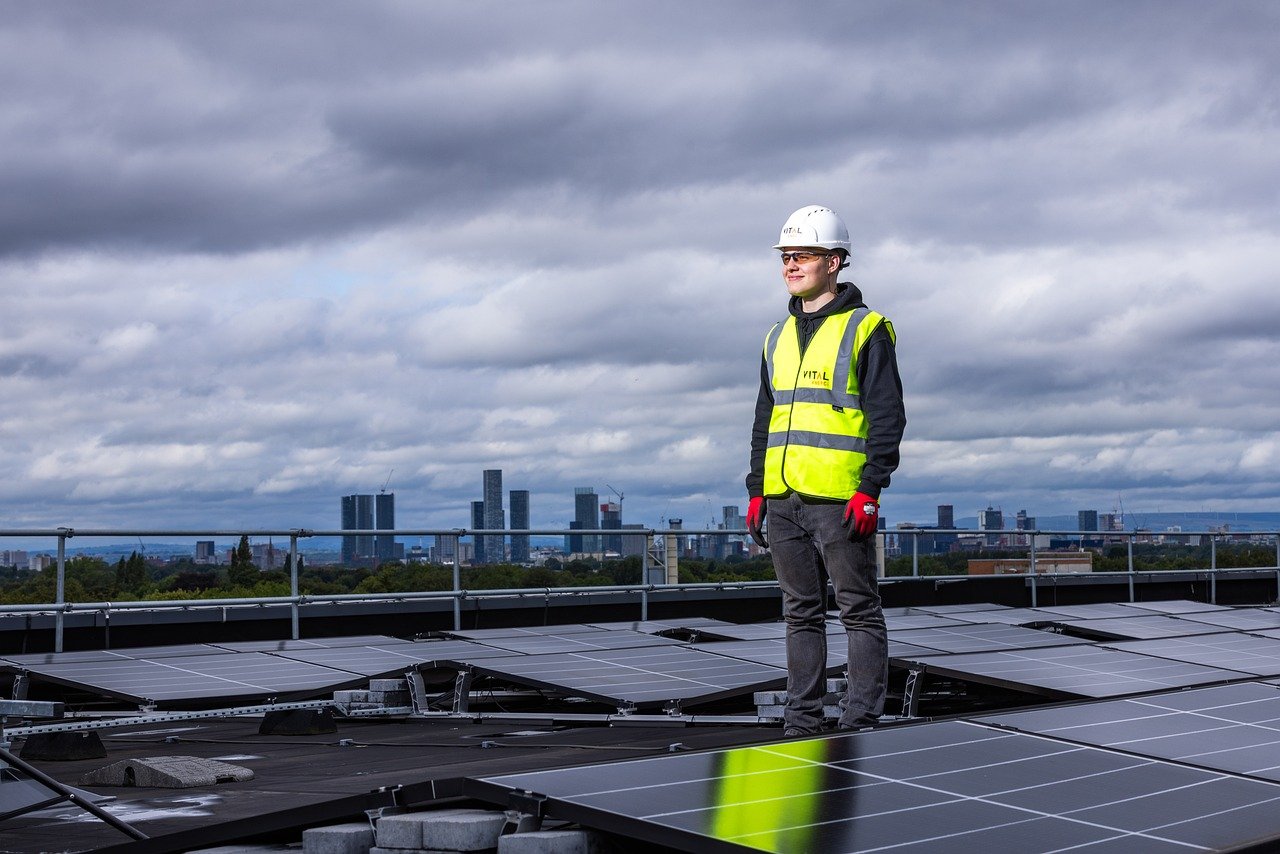
Challenges Facing Renewable Energy Technologies
As promising as renewable energy technologies are, they don’t come without their fair share of challenges. The transition to cleaner energy sources is akin to climbing a steep mountain; the view from the top is breathtaking, but the journey can be fraught with obstacles. One of the primary challenges is financing. Many renewable projects require substantial upfront investments, which can deter potential investors. Without the necessary funding, innovative ideas often remain just that—ideas. To illustrate this, consider the following table that highlights the estimated costs associated with various renewable technologies:
| Technology | Estimated Cost per MW | Funding Sources |
|---|---|---|
| Solar Energy | $1,000,000 | Private Investment, Government Grants |
| Wind Energy | $1,500,000 | Public-Private Partnerships, Tax Incentives |
| Geothermal Energy | $5,000,000 | Venture Capital, Government Loans |
Another significant hurdle is the infrastructure required to support these technologies. Many regions lack the necessary grid systems to effectively distribute renewable energy. Imagine trying to pour water into a cup that has a hole in the bottom; no matter how much you pour, it will never fill up. Similarly, without proper infrastructure, the energy generated by renewables can be lost or underutilized. Additionally, the integration of renewable energy into existing grids poses technical challenges, such as maintaining stability and managing intermittent supply.
Public acceptance is yet another challenge that cannot be overlooked. While many people support the idea of renewable energy, there can be a disconnect when it comes to implementation. Local communities may resist projects due to concerns about aesthetics, noise, or environmental impact. This phenomenon can be likened to the NIMBY (Not In My Backyard) syndrome, where individuals support renewable initiatives but prefer they be located elsewhere. Effective communication and education about the benefits of these technologies are essential to overcoming this barrier.
Moreover, the regulatory landscape surrounding renewable energy can be complex and inconsistent. Different regions and countries have varying policies that can either promote or hinder the growth of renewable technologies. For instance, some governments provide tax incentives and subsidies, while others impose strict regulations that can stifle innovation. Navigating this regulatory maze can be daunting for companies looking to invest in renewable energy, leading to delays and increased costs.
Lastly, there’s the challenge of technology maturity. While some renewable technologies, like solar and wind, have made significant strides, others, such as tidal and wave energy, are still in their infancy. The lack of proven technology can make investors hesitant, creating a vicious cycle where funding is limited, and innovation stalls. It’s crucial for stakeholders to collaborate and invest in research and development to bring these promising technologies to fruition.
In summary, while the potential of renewable energy technologies is undeniable, several challenges must be addressed to ensure their successful implementation. From financing and infrastructure to public acceptance and regulatory hurdles, overcoming these obstacles will require a concerted effort from governments, businesses, and communities alike. Only then can we truly harness the power of renewable energy and pave the way for a sustainable future.
- What are the main challenges facing renewable energy technologies? The main challenges include financing, infrastructure, public acceptance, regulatory issues, and technology maturity.
- How can financing be improved for renewable energy projects? Increased government incentives, public-private partnerships, and innovative funding models can help improve financing.
- Why is public acceptance important for renewable energy? Public acceptance ensures community support for projects, which is crucial for their successful implementation and operation.
- What role do regulations play in renewable energy growth? Regulations can either facilitate or hinder renewable energy projects, depending on how supportive they are of innovation and investment.
Frequently Asked Questions
- What are the emerging renewable energy sources?
Emerging renewable energy sources include tidal energy, geothermal energy, and advanced biofuels. These technologies are gaining traction due to their potential to diversify the energy mix and reduce dependency on fossil fuels. For instance, tidal energy harnesses the power of ocean currents, while geothermal energy taps into the Earth's internal heat. The advancement of biofuels, particularly from waste materials, offers a sustainable alternative to traditional fuels.
- How have solar energy technologies evolved recently?
Solar energy technologies have seen significant advancements, particularly with the introduction of bifacial solar panels and solar tracking systems. Bifacial panels can capture sunlight from both sides, increasing their efficiency. Solar tracking systems adjust the panel's position throughout the day to follow the sun, maximizing energy absorption. These innovations are making solar energy more accessible and efficient than ever.
- What role do energy storage solutions play in renewable energy?
Energy storage solutions are vital for maximizing the potential of renewable energy sources. They allow for the capture and storage of energy produced during peak times for use during periods of low production. Developments in battery technology, including solid-state batteries and lithium-sulfur solutions, are paving the way for longer-lasting and more efficient energy storage options. This ensures a stable energy supply even when renewable sources are not actively generating power.
- Why is hydrogen considered an important energy storage medium?
Hydrogen is emerging as a versatile energy carrier because it can store excess energy from renewable sources and release it when needed. This capability makes it ideal for large-scale energy storage applications. Additionally, hydrogen can be used in fuel cells to generate electricity or as a clean fuel for vehicles, promoting greater integration of renewable energy into various sectors.
- What are smart grids and how do they benefit renewable energy systems?
Smart grids are advanced electrical grids that utilize real-time data and automation to enhance the efficiency and reliability of energy distribution. They allow for better management of renewable energy resources by balancing supply and demand dynamically. This technology facilitates the integration of various renewable sources, ensuring that energy is used more effectively and reducing waste.
- How do government policies influence renewable energy adoption?
Government policies play a crucial role in shaping the growth of renewable energy. Incentives, subsidies, and regulations can encourage investment in clean energy technologies. By creating a favorable environment for renewable energy projects, governments can drive innovation and accelerate the transition to a sustainable energy future. Global trends show that countries with supportive policies tend to adopt renewable technologies more rapidly.
- What challenges do renewable energy technologies face?
Despite their potential, renewable energy technologies face several challenges. Key obstacles include financing issues, the need for improved infrastructure, and public acceptance. Securing investment for new projects can be difficult, especially in competitive markets. Additionally, outdated infrastructure may hinder the integration of renewable sources into existing energy systems. Overcoming these challenges is essential for the successful implementation of renewable energy solutions.

